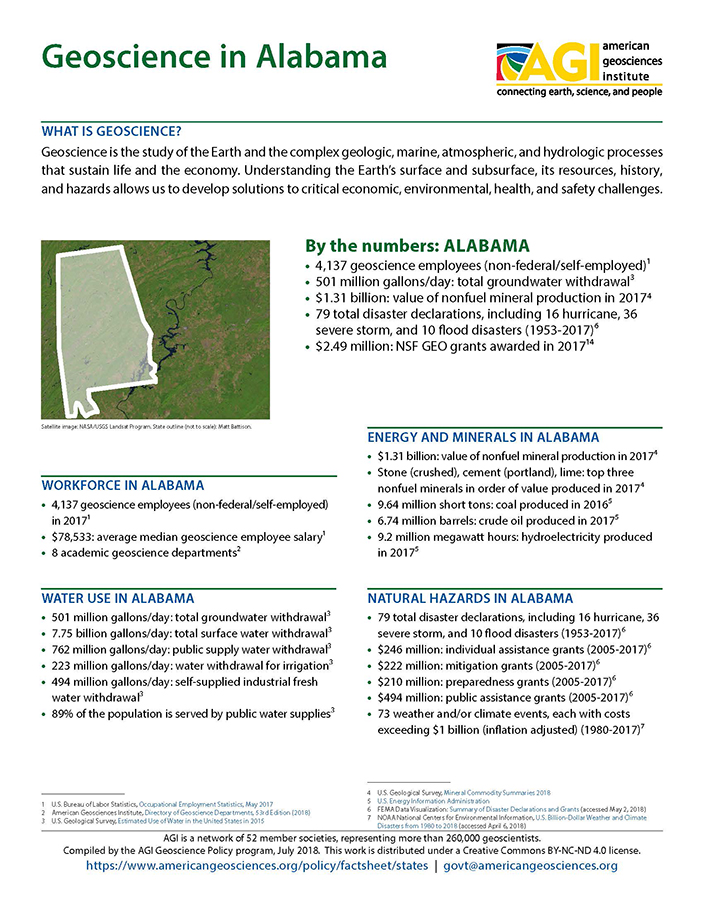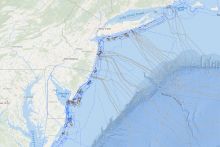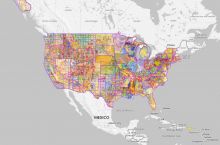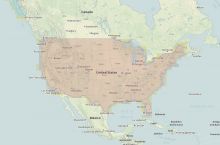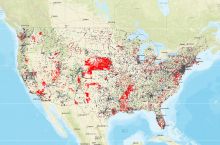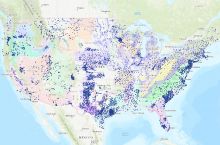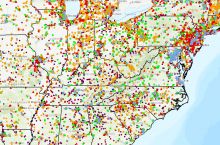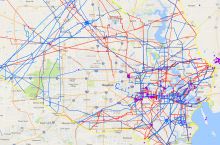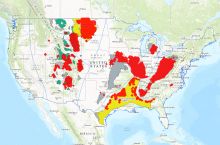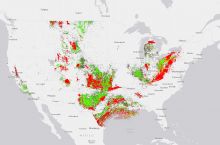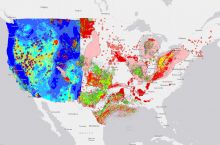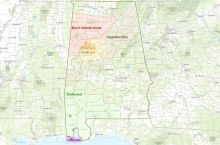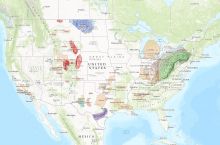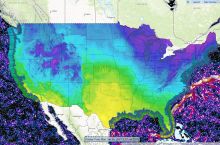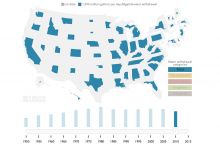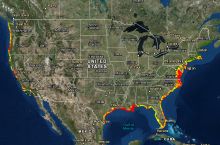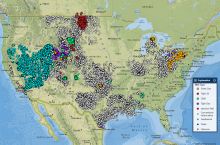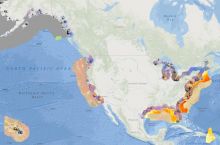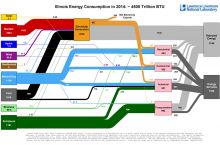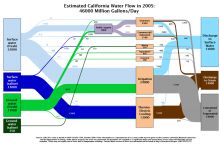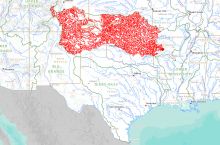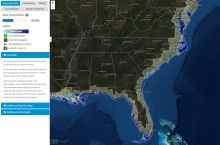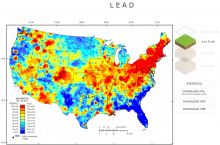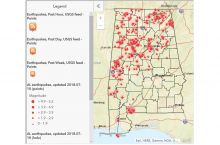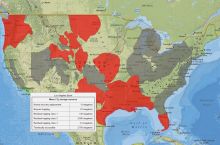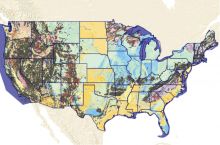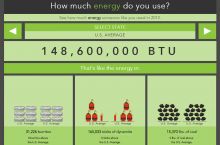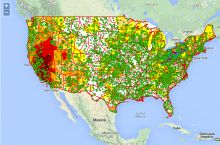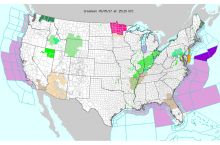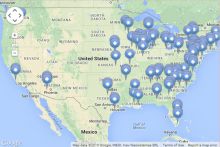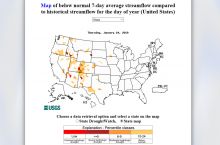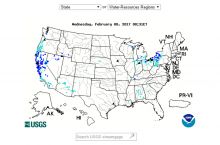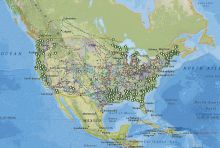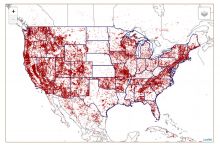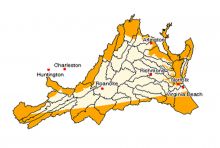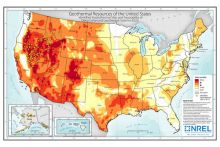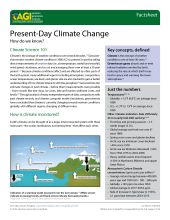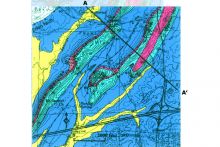By the numbers: Alabama
- 4,137 geoscience employees (excludes self-employed)1
- 501 million gallons/day: total groundwater withdrawal3
- $1.31 billion: value of nonfuel mineral production in 20174
- 79 total disaster declarations, including 16 hurricane, 36 severe storm, and 10 flood disasters (1953-2017)6
- $2.49 million: NSF GEO grants awarded in 2017...
Agencies Working on Geoscience Issues in alabama
The overall mission of ADECA's Energy Division, as the State Energy Office, is to increase energy efficiency, reduce energy consumption, promote energy-efficiency and renewable-energy technologies, make energy efficiency more affordable for low-income residents, and to aid low-income households, especially those with vulnerable populations such as elderly, disabled and young children, with the increasing costs of home energy.
ADECA's Office of Water Resources administers programs for river basin management, river assessment, water supply assistance, water conservation, flood mapping, the National Flood Insurance Program and water resources development. Further, OWR serves as the state liaison with federal agencies on major water resources related projects and conducts any special studies on instream flow needs as well as administering environmental education and outreach programs to increase awareness of Alabama’s water resources.
The mission at ADEM is to assure for all citizens of the State a safe, healthful, and productive environment. ADEM administers all major federal environmental laws, including the Clean Air, Clean Water and Safe Drinking Water acts and federal solid and hazardous waste laws.
The Alabama Emergency Management Agency (the "Alabama EMA") is responsible by statute and several specific Governors' executive orders for coordinating the emergency activities of all state departments and agencies with local governments, private agencies, organizations, federal agencies and other state governments for both peacetime emergency and disaster situations, and situations resulting from war-caused actions. These activities include hazard mitigation, preparedness, response and recovery operations.
The mission of the Alabama Forestry Commission is three-fold: to Protect the Forests from all harmful agents; to Service and Help Landowners to carry out responsible forest management on their property, using professional technical assistance so as to benefit themselves, their land and society; and to Educate the General Public about the value of our forests in insuring both a healthy economy and environment. We do this in the most efficient and cost effective way possible.
The Alabama Surface Mining Commission is the primary regulatory authority for surface and underground coal mining operations for the State of Alabama under the Federal Surface Mining Control and Reclamation Act of 1977.
The Geological Survey of Alabama, established in 1848, provides service and information to Alabama and its citizens as a natural resource data gathering and research agency. As part of its mission, GSA explores and evaluates the mineral, water, energy, biological, and other natural resources of the State of Alabama and conducts basic and applied research in these fields.
The State Oil and Gas Board of Alabama is a regulatory agency of the State of Alabama with the statutory charge of preventing waste and promoting the conservation of oil and gas while ensuring the protection of both the environment and the correlative rights of owners.

